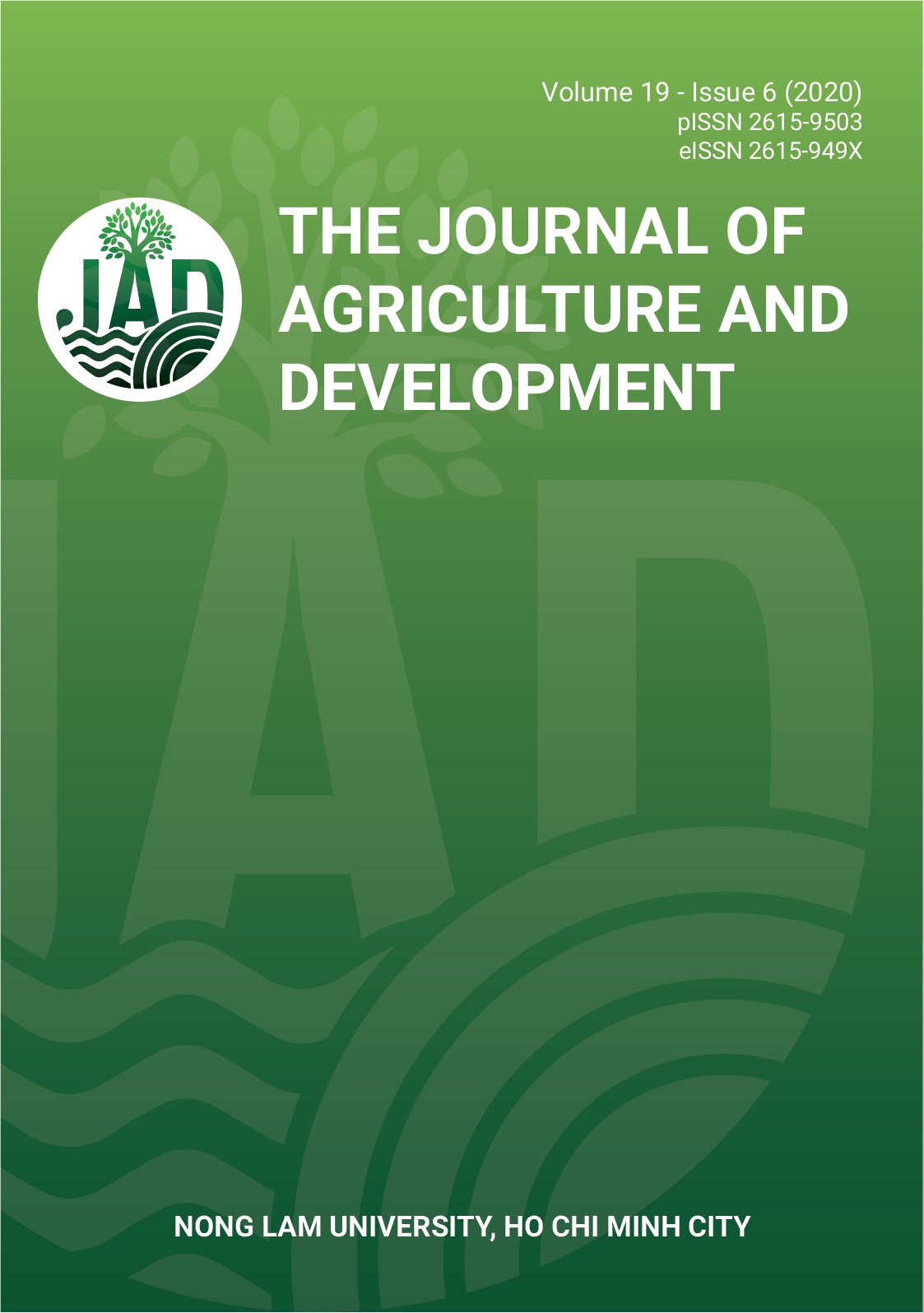Combining ability assessment of agronomic characteristics of 8 inbred sweet corn lines
Main Article Content
Abstract
This study was conducted to evaluate 28 sweet corn hybrid combinations to determine the combination ability of 8 lines of sweet corn inbred (K60, R111, N1, N4, N5, N7, N8 and N12) of a S8 generation. The results showed that the yield of hybrid combinations was in a range of 14.2 to 23.7 tons/ha. Especially, the hybrid combination THL9 had a yield of 23.7 tons/ha, reached the soluble solids content of 13.9%. Meanwhile, the yield of the hybrid combination THL14 reached 21.4 tons/ha and its soluble solids content reached 13.6%. This result was higher than Golden Cob which was the control variable in this study, and had a yield of 17.4 tons/ha and a soluble solids content of 12.2%. Evaluating the combining ability of the yield and total soluble solids content of 8 lines of sweet corn showed that the N4 lines had a higher combining ability than the other lines in terms of fresh corn yield and total soluble solids content. R111 line and N4 line could combine good productivity (Ŝij: 2,433*) and total soluble solids content (Ŝij reached 0.963*).
Article Details
References
Cruz, C. D., Regazzi, A. J., & Carneiro, P. C. S. (2012). Biometric models applied to genetic improvement (4th ed.). Vicosa, Brazil: Federal University of Vicosa.
Feirreira L. U., Melo P. G. S., Vieira R. F., Junior, M. L., Pereira, H. S., Melo, L. C., & de Souza, T. L. P. O. (2018). Combining ability as a strategy for selecting common bean parents and populations resistant to white mold. Crop Breeding and Applied Biotechnology (18), 276-283. https://doi.org/10.1590/1984-70332018v18n3a41
Ferh, W. R. (1987). Principles of cultivar development (1st ed.). New York, USA: MacMillan.
Griffing, B. (1956). Concep of genral and specific combining ability in relation to diallel crossing system. Australian Journal of Biological Sciences 9(4), 463-493. https://doi.org/10.1071/BI9560463
Juvik, J. A. (2009). Feasibility for improving phytonutrient content in vegetable crops using conventional breeding strategies: case study with carotenoids and tocopherols in sweet corn and broccoli. Journal Agriculture Food Chemistry 57(11), 4636-4644. https://doi.org/10.1021/jf900260d
MARD (Ministry of Agriculture and Rural Development). (2011). Circular No. 48/2011/TT- BNNPTNT dated on July 5, 2011. QCVN 01-56:2011/BNNPTNT. National technical regulation on testing for Value of Cultivation and Use of Corn varieties. Retrieved May 25, 2020, from http://tieuchuan.mard.gov.vn/ViewDetails.aspx?id=5554&lv=1&cap=3.
Nayara, N. L. D., Jorcarla, A. C., Julio, C. F. V., Ferreira, J. A., Fernanda, D. A. S., & Messias, G. P.y76y (2017), Combining ability for traits associated with yield and quality in super sweet corn (‘Zea mays’ L. saccharata). Australian Journal of Crop Science 11(09), 1188-1194.
Ngo, H. T., & Nguyen, D. H. (1996). Methods of hybridization test and analysis of the association in the heterosis experiments. Ha Noi, Vietnam: Agricultural Publishing House.
Oliboni, R, Faria, M. V., Neumann, M., Resende, J. T. V., Battistelli, G. M., Tegoni, R. G., & Oliboni, D. F. (2013). Diallel analysis in evaluation of the potential of corn hybrids for generation of base populations to obtain lineages. Semina: Ciˆencias Agr´arias 34(1), 7-18.
Parviz, F., (2016). Principles and utilization of combining ability in plant breeding. Biometrics & Biostatistics International Journal 4(1), 1-22. https://doi.org/10.15406/bbij.2016.04.00085
Solomon, K. F., Martin, I., & Zeppa, A. (2012). Genetic effects and genetic relationships among shrunken (sh2) sweet corn lines and F1 hybrids. Euphytica 185, 385-394. https://doi.org/10.1007/s10681-011-0555-2
Van, T. H. D., Tuong, T. N. N., & Phuong, N. (2019). Evaluation of sweet corn inbred lines and assessment of hybrid dominance of hybrid combinations. Vietnam Journal of Agricultural Science and Technology 3, 14-21.








